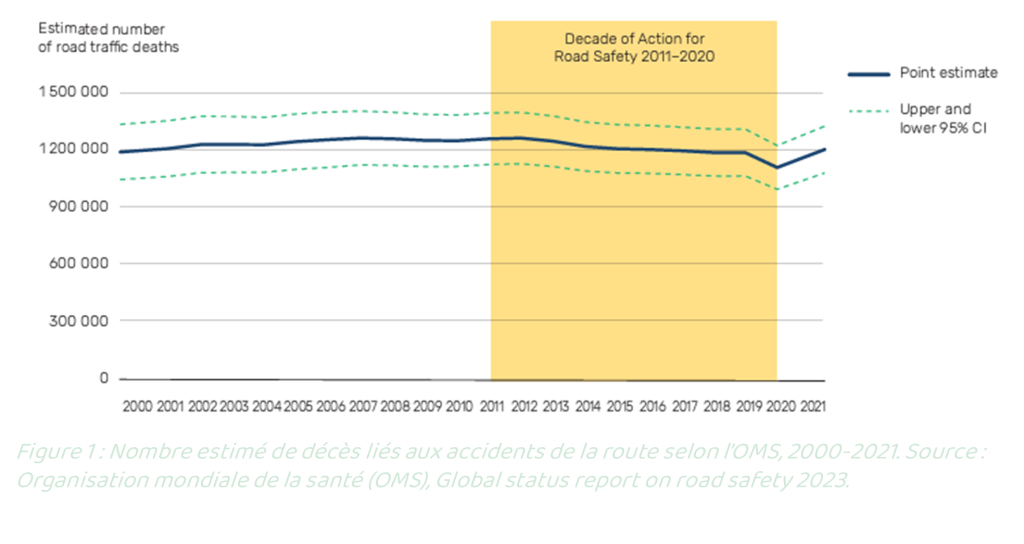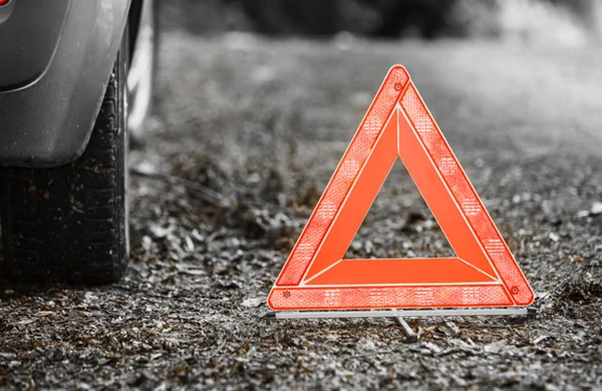Scientific article: the challenges of psychological care for victims of road accidents
On November 19, Cn2r invites you to a webinar on post-traumatic stress disorder (PTSD) resulting from road accidents, with a particular focus on child victims and their families. Ahead of the event, this article provides an overview of this major public health issue.
Playback time: 6 minutes
Public road accidents (PVAs) - also known as traffic accidents or road traffic accidents - cause the loss of more than 1.19 million lives worldwide every year, i.e. 15 deaths per 100,000 inhabitants [1]. In France, this figure stood at 3,398 in 2023 [2]. Road accidents particularly affect vulnerable road users, notably pedestrians, cyclists and motorcyclists, who account for more than half of all road deaths (World Health Organization, 2023). These categories account for a significant proportion of deaths and serious injuries, with a majority of male victims.
According to the Association Victimes de France (AIVF), an MVA "refers to any event occurring on the public highway involving at least one vehicle and causing bodily injury, property damage or both" and includes "collisions between vehicles, accidents involving pedestrians, cyclists, and even incidents without a direct collision but resulting in damage".
An ambitious reduction target, difficult to achieve
The United Nations has set the ambitious target of halving road deaths and injuries by 2030. However, this goal faces major obstacles, particularly in low- and middle-income countries, which are the hardest hit by road deaths [3], where financial resources are lacking to improve road safety infrastructures. These countries, although home to only 60% of the world's vehicles, concentrate 92% of road accident deaths (WHO, 2023). This is largely due to limited transport infrastructure, and prevention campaigns that struggle to reach the most vulnerable populations.

In addition to deaths, tens of millions of people suffer trauma, often with disabling consequences. Although progress has been made, with a 5% reduction in deaths since 2010 (see figure above), the human cost remains extremely high. Trauma, which is often fraught with physical and psychological after-effects, requires constant and specific care that is not always accessible, especially in regions with limited health infrastructures. The lack of rehabilitation facilities and post-accident follow-up complicates care, increasing the risk of complications and long-term disabilities.
Disparities in access to post-accident care
In many regions, particularly in countries with limited resources, health systems are inadequate to provide rapid, comprehensive care for victims of road accidents. The consequences of these shortcomings are visible both physically and psychologically: in Africa, for example, the lack of emergency health services contributes to a high mortality rate, reaching 19 deaths per 100,000 inhabitants in some areas, one of the highest in the world (WHO, 2023). In addition to mortality, these shortcomings in rehabilitation also limit access to post-trauma psychological care for victims and their families. Without appropriate psychological care, the risk of developing symptoms of PTSD increases, exacerbating the long-term repercussions of these accidents.
A heavy economic burden
According to the ONISR's 2023 report , road accidents in France represent an annual cost of around 52.8 billion euros, or 1.9% of GDP. This figure takes into account the cost of fatalities (12.7 billion euros), hospitalization (24 billion euros), minor injuries (3.7 billion euros) and property damage (1.1 billion euros). Every year, almost 16,000 people are seriously injured on the roads, with lasting after-effects that not only impact their personal and professional lives, but also impose an economic burden on their families and society as a whole.
Frequent traumatic consequences
Post-traumatic stress disorder (PTSD) is one of the most frequently observed psychological effects in road accident victims. Almost a third of road accident victims develop symptoms of PTSD, which can last well beyond the physical after-effects [4]. Several factors influence this high prevalence: the female sex, for example, is associated with a greater risk of developing PTSD, potentially due to differences in stress response and specific coping strategies [5]. The perception of a threat to one's own life during the accident is also an aggravating factor. A history of psychological disorders, such as episodes of depression or anxiety, further increases the risk of developing PTSD [6]. Furthermore, a fragile economic context complicates access to necessary care and adds a source of daily stress that intensifies PTSD symptoms, especially in environments where post-traumatic psychological support is limited or difficult to access. Finally, the severity of physical injuries can add to the burden of trauma: victims with severe injuries or chronic pain have more difficulty recovering, as prolonged suffering impedes psychological recovery [7].
When prolonged mourning complicates psychological recovery
In addition to PTSD, accident victims may also experience various forms of grief, not limited to the losses associated with death. These reactions may result from the sudden loss of health, autonomy or life as they knew it before the accident. These bereavements can evolve into protracted grief, characterized by persistent symptoms such as intense nostalgia for the past life, constant preoccupation with the losses suffered and significant difficulties in accepting the new reality [8]. Recognizing these often underestimated forms of grief is essential, because when they coexist with PTSD, they exacerbate psychological suffering and make the recovery process even more difficult. To find out more about the mechanisms and implications of bereavement, including complicated bereavement, you can consult the dossier produced by Cn2r on this subject.
Towards comprehensive care for victims
It is therefore vital that, in addition to physical care, psychological care is provided to limit the long-term repercussions of road accidents on the quality of life of those involved. With the participation of psychiatry professor Philippe Birmes in its webinar, Cn2r will shortly be addressing the traumatic consequences of road accidents, with a particular focus on the impact on children and their parents, and appropriate intervention strategies.
[1] World Health Organization. (2023). Global road safety report 2023. World Health Organization.
[2] Observatoire national interministériel de la sécurité routière. (2024). Bilan 2023 de la sécurité routière. Ministry of the Interior, French Republic.
[3] World Health Organization. (2010). Global Plan for the Decade of Action for Road Safety 2011-2020. Geneva: WHO.
[4] Kovacevic, J., Miskulin, M., Degmecic, D., Vcev, A., Leovic, D., Sisljagic, V., Simic, I., Palenkic, H., Vcev, I., & Miskulin, I. (2020). Predictors of Mental Health Outcomes in Road Traffic Accident Survivors. Journal of Clinical Medicine, 9(2), Article 2.
[5] Heron-Delaney, M., Kenardy, J., Charlton, E., & Matsuoka, Y. (2013). A systematic review of predictors of posttraumatic stress disorder (PTSD) for adult road traffic crash survivors. Injury, 44(11), 1413-1422.
[6] Kovacevic, J., Miskulin, M., Degmecic, D., Vcev, A., Leovic, D., Sisljagic, V., Simic, I., Palenkic, H., Vcev, I., & Miskulin, I. (2020). Predictors of Mental Health Outcomes in Road Traffic Accident Survivors. Journal of Clinical Medicine, 9(2), Article 2.
[7] Papadakaki, M., Ferraro, O. E., Orsi, C., Otte, D., Tzamalouka, G., von-der-Geest, M., Lajunen, T., Özkan, T., Morandi, A., Sarris, M., Pierrakos, G., & Chliaoutakis, J. (2017). Psychological distress and physical disability in patients sustaining severe injuries in road traffic crashes: Results from a one-year cohort study from three European countries. Injury, 48(2), 297-306.
[8] Boelen, P. A., Eisma, M. C., Keijser, J. de, & Lenferink, L. I. M. (2022).Traumatic stress, depression, and non-bereavement grief following non-fatal traffic accidents: Symptom patterns and correlates. PLoS ONE, 17(2)



